Thank you to the transcribers who responded to our annual TypeWell Transcriber Insights Survey! We created this survey in 2023 to track work volume and job satisfaction among TypeWell Transcribers, and your responses help us identify job trends and develop best practices. You can see last year’s survey results here.
Here’s what we learned this year.
A quiet return to campus?
Our TypeWell Transcriber Insights Survey revealed that remote work is still the top preference among transcribers, but more transcribers accepted hybrid schedules in 2025.
Why the shift? One likely reason is the shrinking availability of remote-only jobs. As competition increases, transcribers may be broadening their job search criteria to secure enough work.
What is “enough work” for transcribers? We asked this question for the first time on this year’s TypeWell Transcriber Insights Survey, and transcribers told us: full- time.
“Full- time” is subjective for transcribers and doesn’t necessarily mean 40 hours per week. We will explore this in more depth a bit later.
We also asked transcribers to explain the different advantages of on-site or remote work.
Where transcribers work in 2025
Fewer transcribers are accepting only remote work than they were in 2024. Instead, transcribers are being flexible, accepting both remote and on-site jobs in higher numbers.
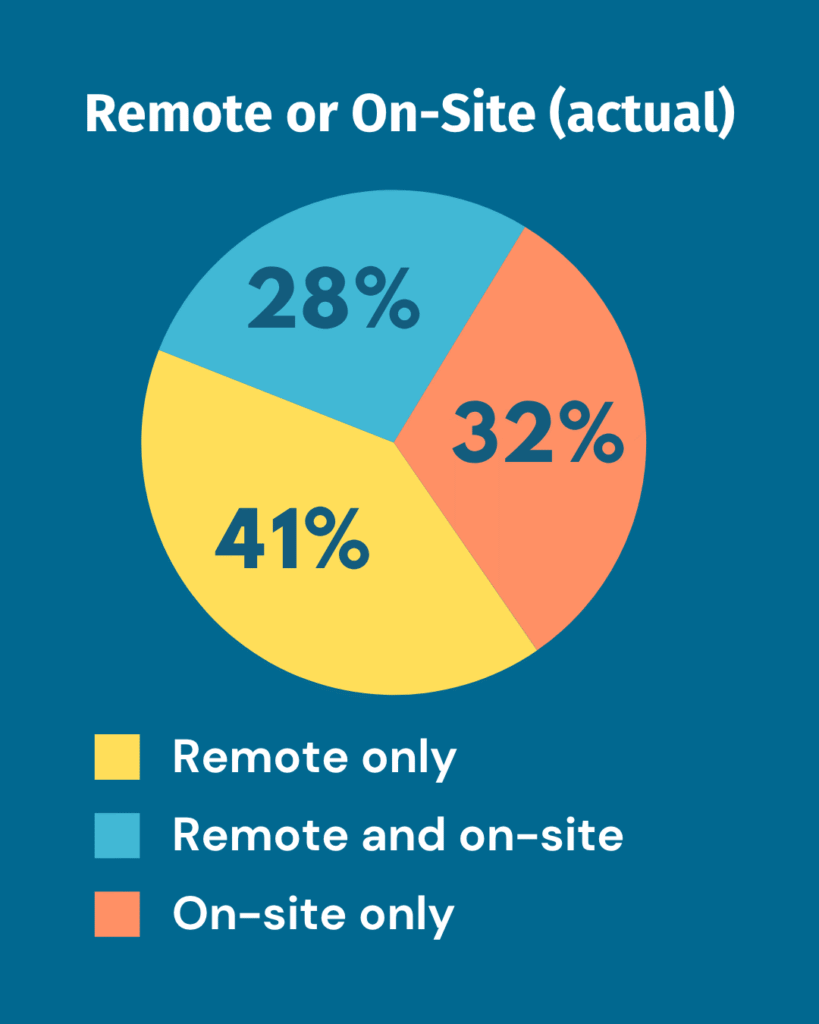
- 28% now take a mix of remote and on-site work — up from 18% in 2024
- 40% accept only remote jobs — down from 50% last year
- 32% accept only on-site jobs — steady since 2024
Preferences tell a different story about work location
Despite the rise in hybrid arrangements, nearly half of transcribers still prefer remote-only work:

- While 40% only work remotely-only jobs, 46% say they’d prefer to only work remotely
- While 32% work on-site only, only 19% prefer to work on-site only
- While 28% work both remotely and on-site, 35% have no strong preference
This contrast between preference and reality suggests a growing pressure to adapt to the changing job market.
Feast or famine: Transcribers navigate unpredictable semesters
Workload satisfaction dipped slightly this spring, with 65% of transcribers reporting that they received as much work as they hoped for, or more. That’s down from 76% in 2024, but still higher than in 2023.
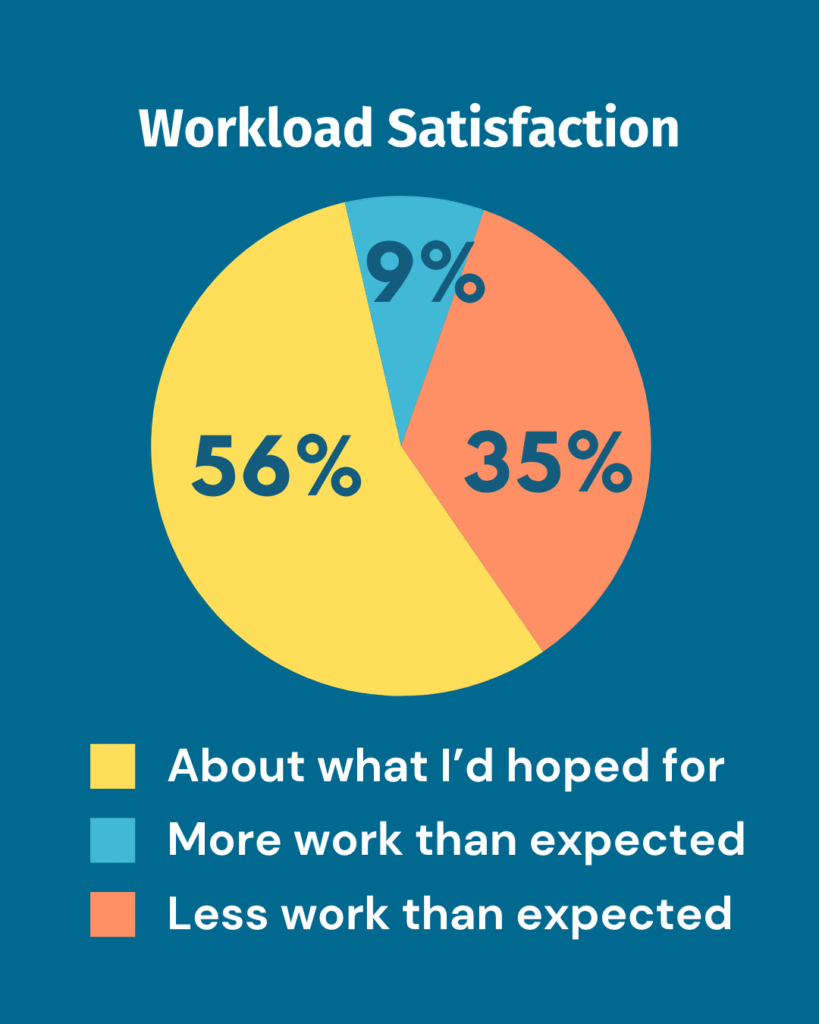
However, over a third of transcribers said they received less work than expected this semester. This reflects a broader pattern that transcribers often describe: unpredictable semesters with alternating highs and lows.
What’s driving the fluctuation?
While the TypeWell Transcriber Insights Survey didn’t include fixed-response options about school budgets or coordinator decisions, several respondents hinted at underlying dynamics:
- One transcriber expressed a desire to help agencies reach out to more institutions, suggesting underutilized capacity.
- Others pointed to the importance of reliable schedules and consistent teams, hinting that some assignments may fall through due to instability or last-minute changes.
- A few noted that on-site availability varies by region, which may affect total hours available.
What’s considered “enough” work?
In previous years, the TypeWell Transcriber Insights Survey did not ask transcribers what “enough work” means to them. So this year, we asked more specific questions about the number of hours they’re getting. We asked: Do you seek full-time or part-time work? What do those words mean to you?
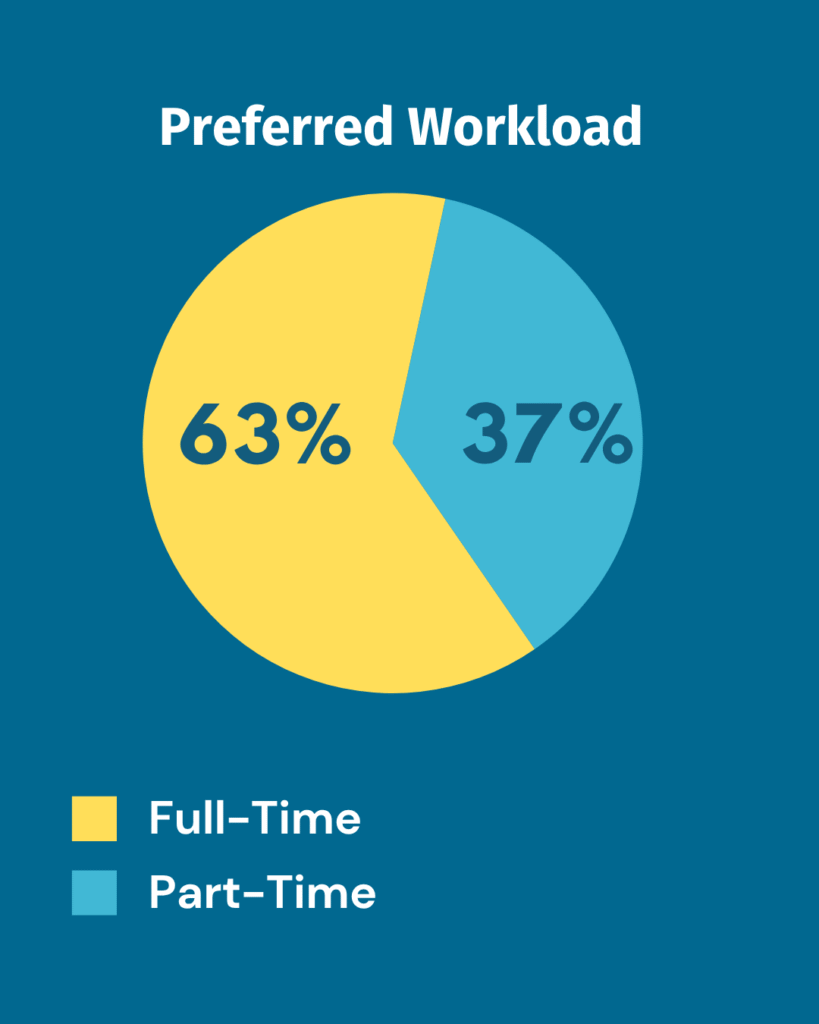
Two thirds of respondents told us that they want full-time work.
The typical 40-hour work week carries a risk of repetitive stress injury and may not appeal to the average transcriber, so “full-time” can be subjective. Most transcribers defined a “full-time” workload as 25-35 hours per week, and “part-time” as 15-25 hours per week.

- 60% said 25–35 hours/week counts as full-time
- 24% said 15–25 hours/week
- 15% expect a traditional 40-hour workweek
When it comes to part-time:

- 58% said 15–25 hours/week
- 28% said under 15 hours/week
- Just 9% said anything under 35 hours felt part-time
In short, transcribers are working with personalized definitions of full-time and part-time based on sustainability, not just hours.
The difference in opinion about what constitutes full-time and part-time work may vary depending on transcriber experience and preference, whether a transcriber is on-site or remote, or how much transcribers can expect to earn per hour.
Why transcribers want full-time work
Transcribers aren’t treating transcription as a side gig. For most, it’s a primary profession; something they depend on financially and invest in seriously. The desire for full-time work is about predictability, stability, and a role that reflects the career-level commitment they’ve made.
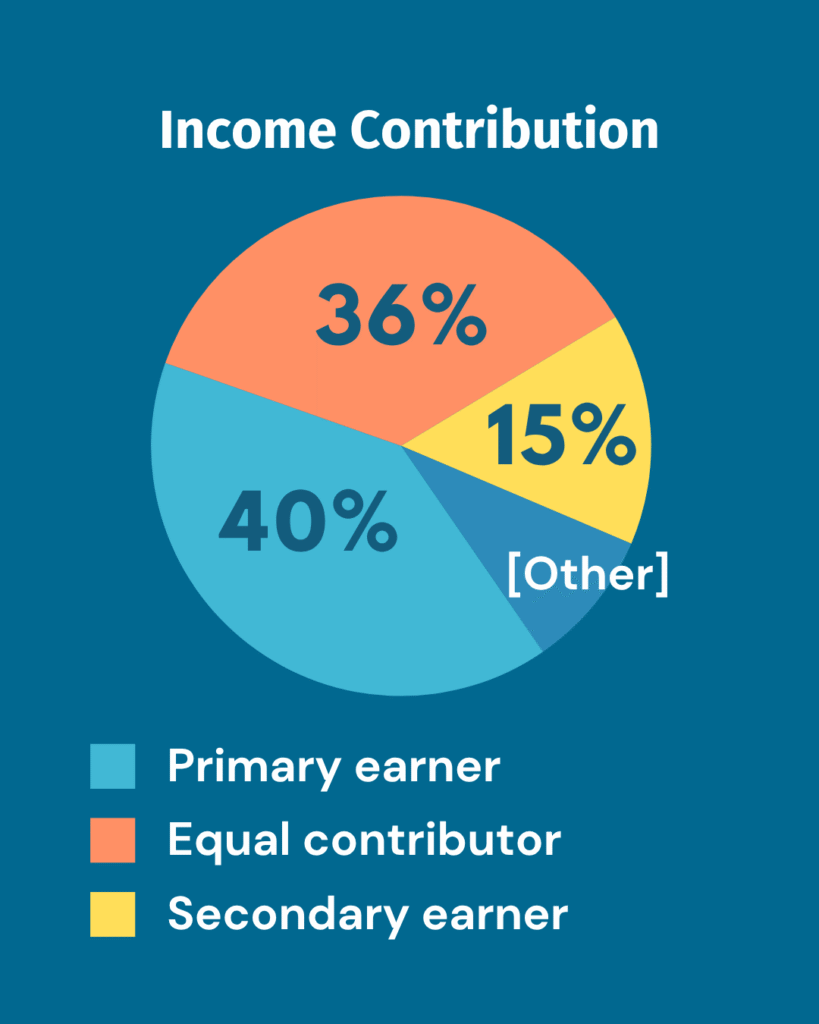
- 40% of respondents said they are the primary breadwinner in their household.
- 36% said they provide an equal share of income.
- Only 15% described themselves as secondary earners.
In total, 76% of respondents to the TypeWell Transcriber Insights Survey are contributing at least half of their household income through transcription.
And it’s not just about having multiple income streams:
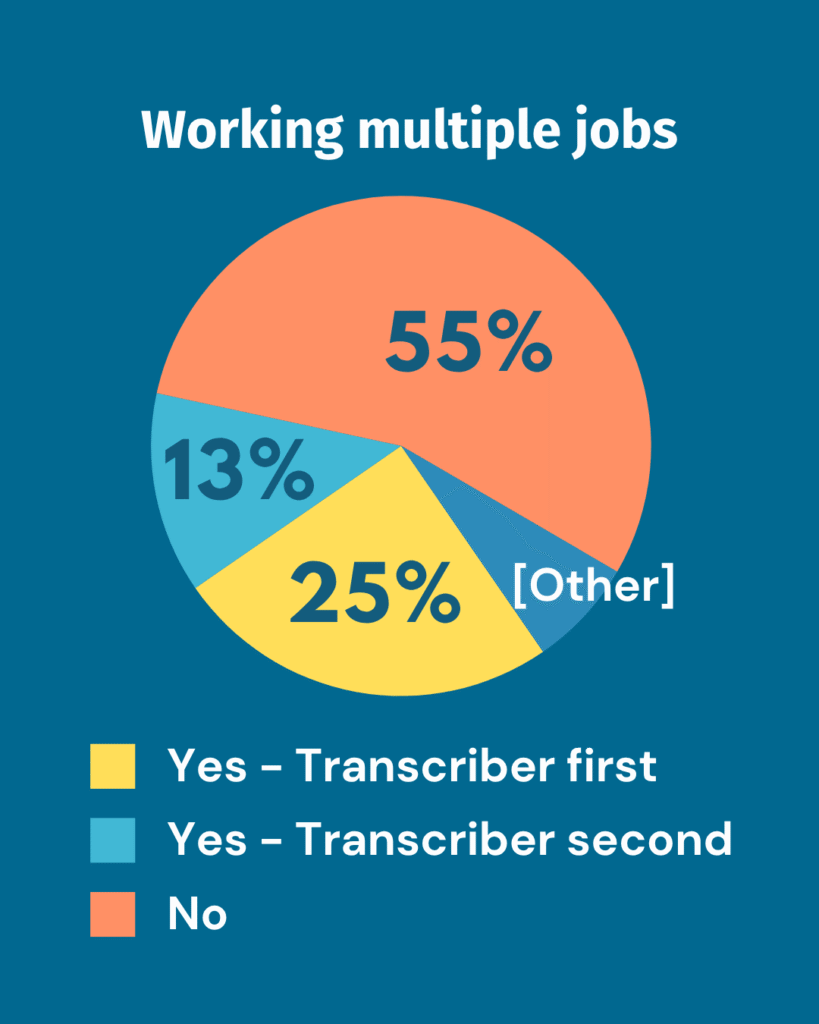
- 55% of transcribers said they do not work any other job — they rely solely on transcription.
- Among those who do work another job, most still reported that transcription provides the majority of their income.
- Only a few described their work as supplemental or volunteer-based
TypeWell transcription is a career
When transcribers talk about wanting “full-time” work, they’re not necessarily asking for 40-hour weeks. Most are aiming for a sustainable and livable workload, commonly in the 25–35 hour range, with consistent scheduling and sufficient pay to support themselves or their families.
Transcribers are looking for a reliable path forward in a field they’re deeply committed to.
What did transcribers tell us about the relative advantages of on-site and remote work? Stay tuned for Part 2!


